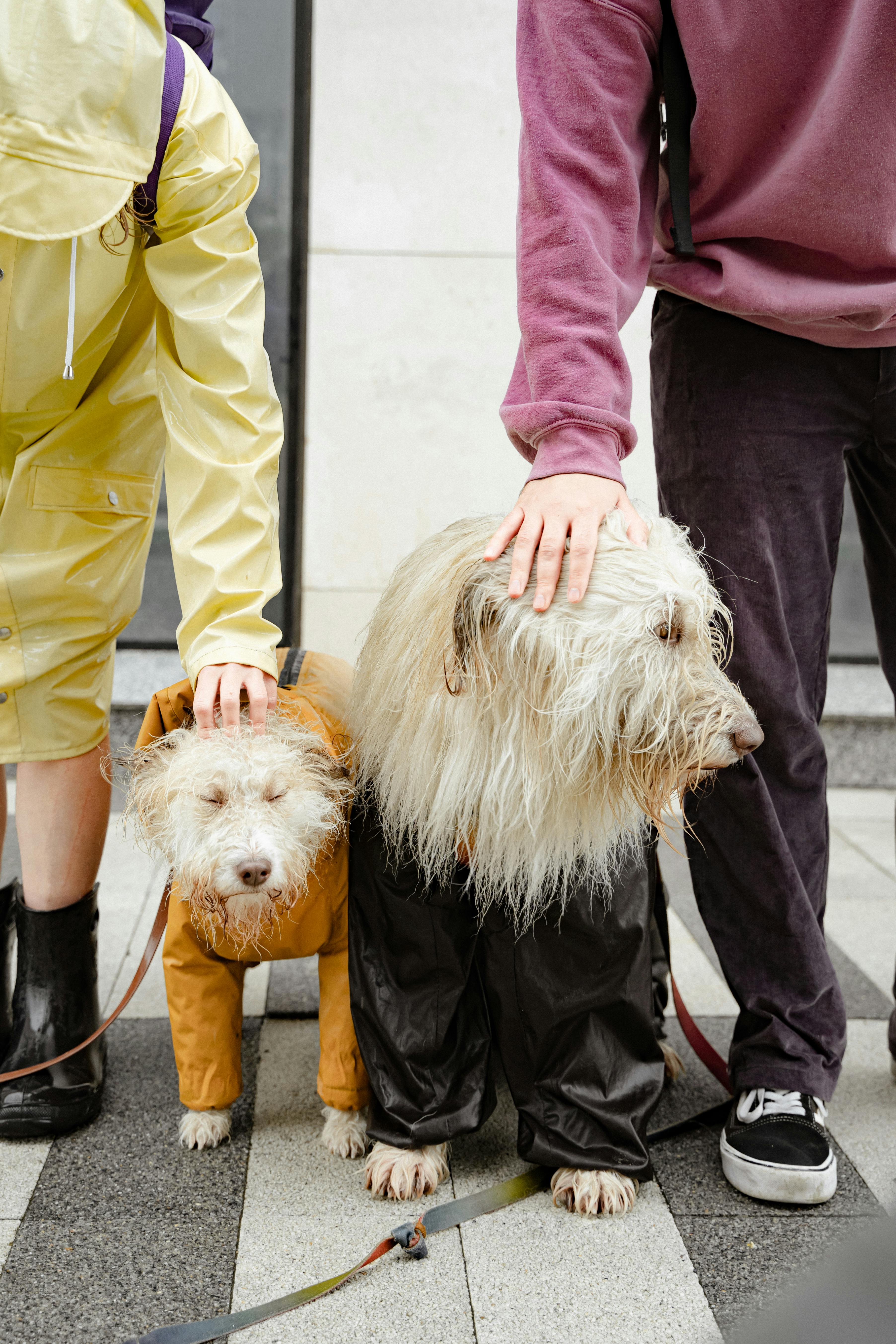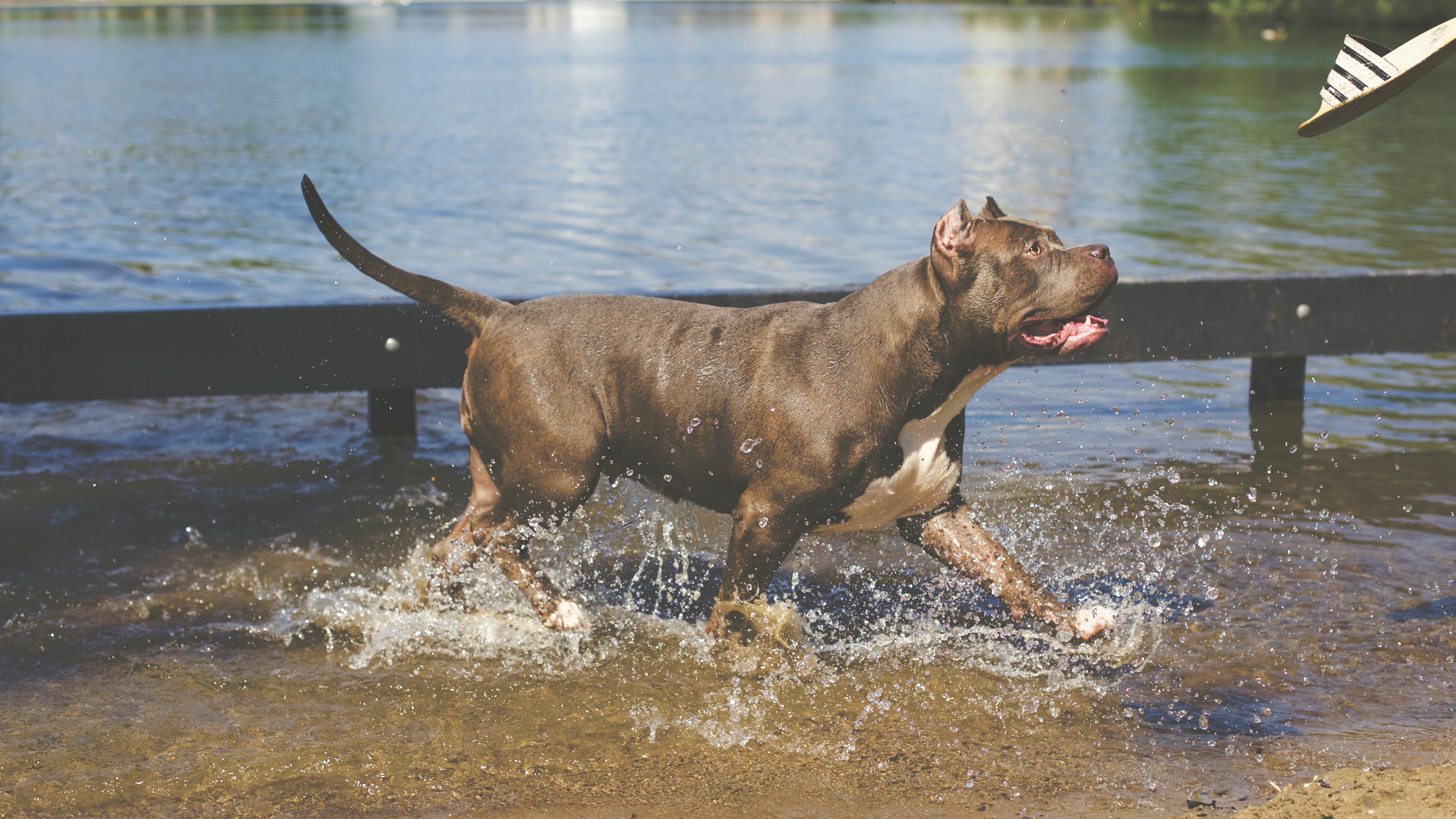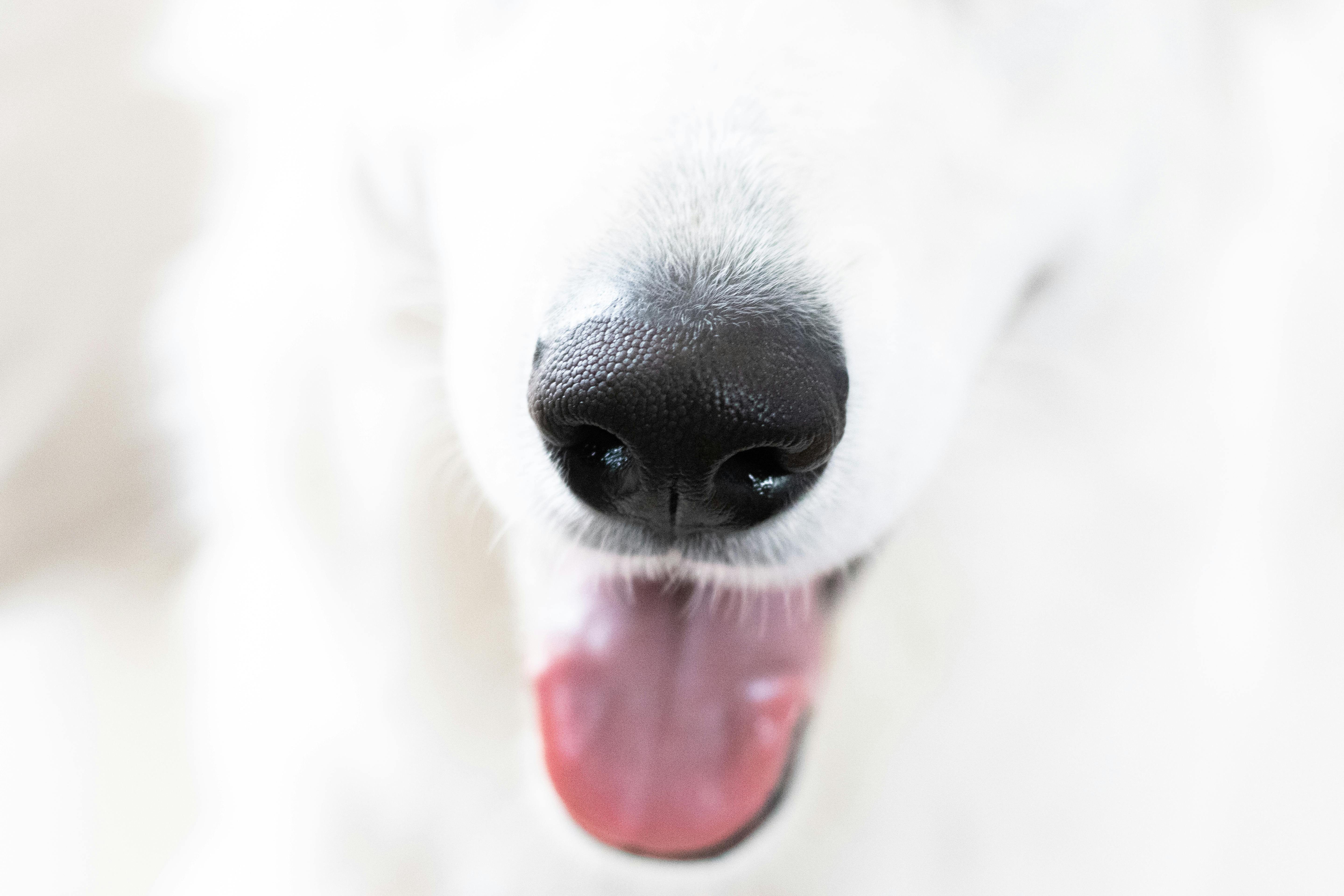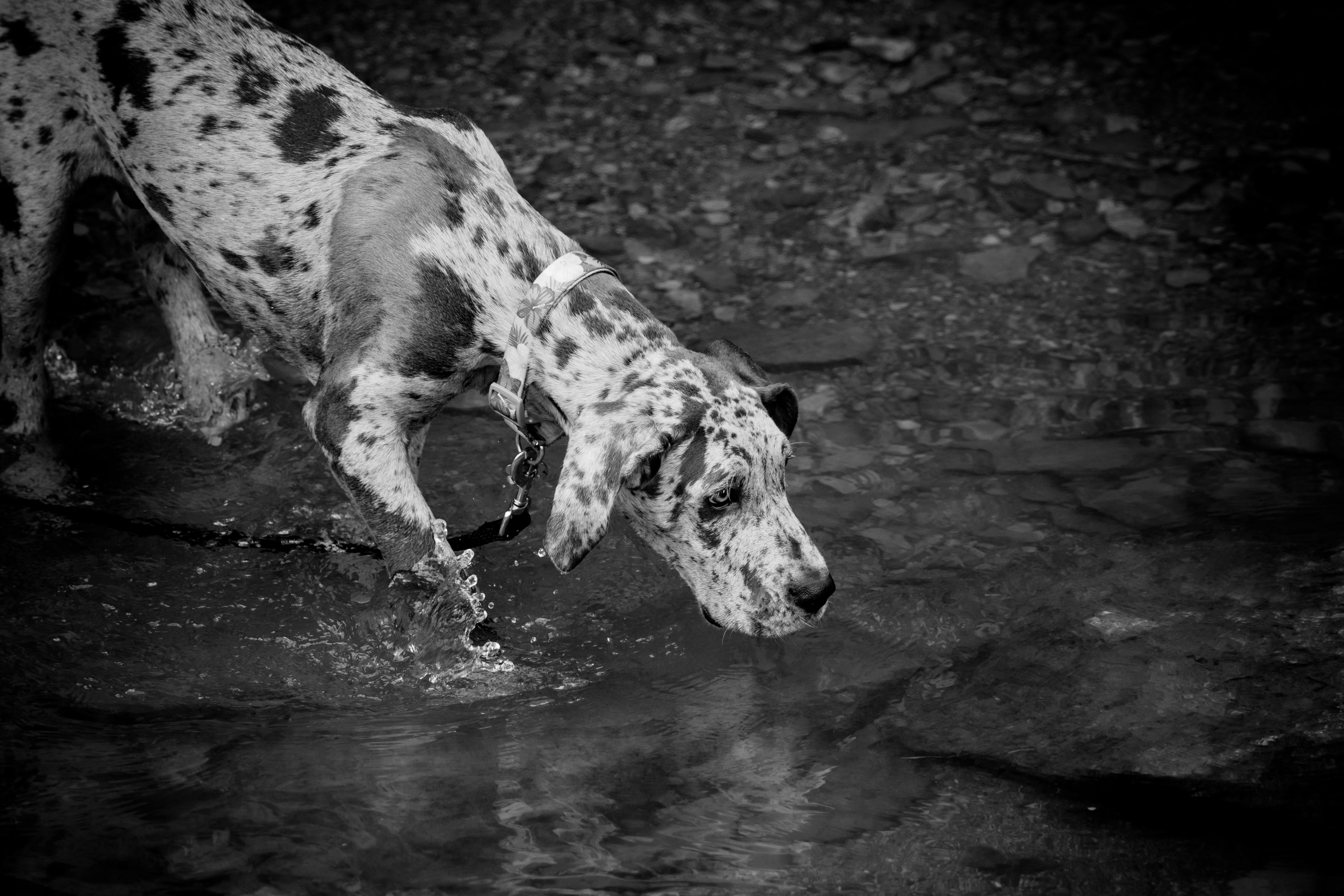Have you ever wondered, “Why do dogs have wet noses?” This curious trait is not just an adorable quirk; it serves several surprising benefits for our furry friends! A dog’s nose is often cold and damp, and this unique feature plays a crucial role in their overall health and communication. Many pet owners might think that a wet nose is simply a sign of a happy dog, but there’s much more to it than that! In this article, we’ll explore the fascinating science behind why dogs’ noses are wet and how it helps them detect scents better than we can imagine. Did you know that a wet nose helps regulate their body temperature too? As we dive deeper into the reasons behind this intriguing phenomenon, you’ll discover how evolution has shaped this aspect of canine biology. So, if you’re curious about the benefits of a wet nose for dogs and want to learn more about their amazing abilities, keep reading! You’ll be amazed at what you find out, and you might just look at your dog’s nose in a whole new light!
Unveiling the Mystery: Why Do Dogs Have Wet Noses? The Science Behind It

Ever wonder why your furry friend has that cool, moist nose? It’s a question many dog owners ask, and it turns out that there’s actually quite a bit of science behind it. Dogs and their wet noses have fascinated humans for centuries, and understanding this can deepen our appreciation for our canine companions. So, let’s dive into the reasons why dogs have wet noses and the surprising benefits that come with it.
The Science Behind Wet Noses
Dogs noses are not only adorable, but they serve crucial functions. First, the wetness of a dog’s nose helps enhance their sense of smell. Here’s how it works:
Moisture Retention: The wetness on a dog’s nose helps trap scent particles. This allows the olfactory receptors in their noses to pick up on smells much more effectively. It’s like a sponge soaking up all the good smells around them!
Temperature Regulation: Dogs can’t sweat like humans do. Their noses help cool them down. When a dog pants, moisture evaporates from the nose, helping to regulate their body temperature.
Health Indicators: A wet nose can indicate a healthy dog. If a dog has a dry nose, it might be a sign of dehydration or illness. However, it’s not the only way to gauge a dog’s health.
Behavioral Signals: Dogs use their noses to communicate. A wet nose poking you is often a sign of affection or an invitation to play.
Historical Context: Dogs’ Noses Over Time
Throughout history, dogs have been revered for their incredible sense of smell. Ancient civilizations, including Egyptians and Romans, recognized their abilities. Dogs were often used for hunting, and their keen noses played a major role in tracking down prey.
As time went on, humans began to breed dogs for specific purposes, leading to a variety of breeds with different nose shapes and sizes. Some dogs have longer noses, enhancing their olfactory capabilities further.
Surprising Benefits of Wet Noses
The benefits of a wet nose extend beyond just smelling better. Here are some surprising advantages:
Enhanced Scent Detection: With a wet nose, dogs can identify scents over greater distances, making them excellent at search-and-rescue missions or tracking lost items.
Improved Social Interactions: A wet nose can signify a friendly dog. Other dogs and even humans often respond positively to a moist nuzzle, fostering social connections.
Health Monitoring: By checking if a dog’s nose is wet and cool, owners can monitor their pet’s health. A sudden change can prompt a visit to the vet.
Cooling Mechanism: The moisture on a dog’s nose can help to cool them down on hot days, reducing the risk of overheating.
Natural Moisturizer: Dogs’ noses are naturally designed to stay moist. It helps maintain the skin’s health and prevents cracking.
Fun Facts About Dog Noses
Dogs have about 220 million olfactory receptors in their noses, compared to about 5 million in humans. This is why their sniffing abilities are so superior!
The texture of a dog’s nose is unique, much like a human fingerprint. No two dog noses are alike.
Some breeds, like Bloodhounds, can follow a scent trail that’s several days old!
A Comparison: Dogs vs. Cats
When comparing dogs to cats, the differences in their noses are striking. While both animals have wet noses, dogs rely heavily on their sense of smell for social interactions and navigation. Cats, on the other hand, tend to use their noses more for marking territory and less for social cues.
Practical Examples of Nose Use
Tracking: Search and rescue dogs are trained to locate missing persons using their incredible sense of smell. Their wet noses play a key role in this process.
Detection Work: Police dogs are often used to detect drugs or explosives. Their noses are crucial in keeping communities safe.
Therapy and Support: Many therapy dogs use their moist noses to comfort people in hospitals or nursing homes, providing emotional support.
In summary, the mystery of why dogs have wet noses reveals a fascinating blend of biology, history, and social interaction. Understanding the science and benefits can help dog owners appreciate their pets even more. So next time your dog gives you a gentle nudge with that cool, wet nose, remember all the incredible things that come along with it!
Top 5 Surprising Benefits of Dogs Having Wet Noses You Didn’t Know About

Have you ever wondered why do dogs have wet noses? It seems like such a simple question, but there’s so much more to it than just a peculiar quirk of our furry friends. In fact, the wetness of a dog’s nose is not only a sign of health but also comes with some surprising benefits that many of us don’t even know about. Let’s dive into the top 5 surprising benefits of dogs having wet noses that might just change the way you see your canine companion.
1. Enhanced Sense of Smell
Dogs are known for their incredible sense of smell, and a wet nose helps with that. The moisture on a dog’s nose captures scent particles from the air, which enhances their ability to smell. When dogs sniff, the wet surface of their nose absorbs these particles and sends them to the olfactory receptors in their brain. This is why dogs can find lost objects or even detect illnesses in humans.
- Dogs have up to 300 million olfactory receptors.
- Their sense of smell is 40 times better than humans.
- Wet noses can absorb scents faster and more efficiently.
2. Temperature Regulation
You might not have thought about this, but a dog’s wet nose plays a role in regulating their body temperature. Dogs don’t sweat like humans do; they primarily cool off through panting and the evaporation of moisture from their noses. When a dog’s nose is wet, it can help cool them down more effectively.
- Dogs sweat minimally through their paw pads.
- A wet nose can help lower body temperature in hot weather.
- It aids in preventing overheating during exercise or play.
3. Health Indicator
The condition of a dog’s nose can often indicate its health status. A healthy dog typically has a cool, moist nose, while a dry or cracked nose could signal dehydration, fever, or other health issues. Regularly monitoring your dog’s nose can be a simple yet effective way to keep track of their well-being.
- Healthy nose: moist, cool, and smooth.
- Dry, warm, or cracked nose could indicate:
- Dehydration
- Allergies
- Infections
4. Communication Tool
Dogs use their noses to communicate with each other and their human companions. The moisture on their nose can pick up scents from the environment, allowing them to gather information about other animals or people they meet. When dogs greet each other, they often sniff each other’s noses first, which is a form of social interaction and communication.
- Dogs communicate through scent.
- Sniffing is a way to gather information about other dogs.
- It helps establish social hierarchies and relationships.
5. Bonding Experience
The act of petting a dog and feeling their wet nose can actually enhance the bond between a dog and its owner. The tactile experience of a wet nose is often comforting and can elicit positive feelings in humans. Interacting with your dog, especially through gentle touches, can increase the levels of oxytocin (the love hormone) in both you and your pet.
- Petting dogs can reduce stress and anxiety for both parties.
- It creates a positive emotional connection.
- The wet nose can be a reminder of affection and loyalty.
Practical Examples of How to Care for Your Dog’s Nose
To ensure your dog’s nose remains healthy, consider these tips:
- Hydration: Make sure your dog has access to fresh water at all times.
- Regular Vet Visits: Keep up with vet check-ups to monitor overall health.
- Moisturizing: If your dog’s nose appears excessively dry, consult your vet for suitable moisturizers.
- Watch for Changes: Be alert for any significant changes in the texture or temperature of your dog’s nose.
Quick Facts About Dogs’ Noses
Here’s a handy list of interesting facts about dogs’ noses:
- Dogs’ noses come in all shapes and sizes!
- The unique pattern of a dog’s nose is like a fingerprint.
- Dogs can detect certain cancers in humans.
- A dog’s sense of smell can even pick up on emotional changes in humans.
Understanding why do dogs have wet noses and the surprising benefits that come with it can deepen your appreciation for your furry friend. So next time you greet your dog, take a moment to marvel at their wet nose and all the incredible functions it serves. It’s a small detail that packs a powerful punch in the world of canine health and communication!
How a Dog’s Wet Nose Enhances Their Sense of Smell: Fascinating Facts You’ll Love

Have you ever wonder why dogs have wet noses? It’s an interesting question, and the answer is not just cute but also has a lot to do with how dogs interact with the world around them. A dog’s wet nose is more than just an adorable feature; it plays a crucial role in their amazing sense of smell. In this article, we will explore the fascinating facts about how a dog’s wet nose enhances their ability to smell, and uncover the surprising benefits it provides.
The Science Behind a Dog’s Wet Nose
Dogs’ noses are incredibly complex and sensitive. They have up to 300 million smell receptors in their noses, compared to about 6 million in humans. The moisture on their noses, which is often caused by a combination of saliva and environmental factors, helps to capture scent particles in the air. Here’s how it works:
- Absorption of Scents: The wet surface of a dog’s nose helps to absorb scent molecules. When a dog sniffs, these molecules stick to the moisture, allowing their highly developed olfactory system to detect and analyze them.
- Temperature Regulation: A dog’s wet nose also helps to regulate their body temperature. When they breathe, the moisture evaporates, which cools them down. This is especially important for breeds that struggle to cool off efficiently.
Historical Perspective on Dogs’ Noses
Historically, dogs have been companions to humans for thousands of years. Their keen sense of smell has been used for various purposes, from hunting and tracking to search and rescue operations. The unique structure of a dog’s nose has been honed through generations, making them exceptional at detecting scents, including drugs, explosives, and even certain medical conditions.
Interesting Facts You Might Not Know
Here are some surprising facts about dogs and their wet noses:
- Different Shapes and Sizes: Dog breeds have different nose shapes and sizes, which can affect their smelling abilities. For example, Bloodhounds are known for their incredible tracking skills, while breeds like Greyhounds have a streamlined nose shape.
- Scent Discrimination: Dogs can distinguish between different scents even when they are mixed together. For instance, they can track a single person’s scent in a crowded area, which is why they are often used in police work.
- Nasal Whiskers: Dogs have special sensory hairs called vibrissae around their noses that help them detect changes in their environment, including the presence of certain smells.
Benefits of a Wet Nose
Here are several benefits of having a wet nose:
- Enhanced Smelling Ability: The moisture on a dog’s nose amplifies their ability to detect odors.
- Health Indicator: A dog’s nose can indicate their health. A wet, cool nose is generally a sign of a healthy dog, while a dry nose can sometimes indicate illness.
- Cooling Mechanism: As mentioned earlier, a wet nose helps regulate their body temperature, especially in warm weather.
Fun Facts About Dogs’ Noses
- Dogs Can Smell Emotions: Believe it or not, dogs can smell human emotions. They can detect stress or anxiety through your scent.
- Unique Nose Prints: Just like human fingerprints, every dog has a unique nose print that can be used for identification.
- Nose Color: The color of a dog’s nose can vary from breed to breed. Some dogs have black noses, while others may have brown or even pink noses.
How to Care for Your Dog’s Nose
Maintaining your dog’s nose health is important. Here are some tips:
- Hydration: Ensure your dog is properly hydrated, as dehydration can lead to a dry nose.
- Regular Check-ups: Regular veterinary check-ups can help monitor any changes in your dog’s nose that might indicate health issues.
- Avoid Irritants: Keep your dog away from harsh chemicals or substances that could irritate their nose.
In summary, a dog’s wet nose is not just a cute feature but is essential for their impressive sense of smell and overall health. By understanding why dogs have wet noses, we can appreciate them even more. Next time your furry friend greets you with a moist nose, remember all the fascinating facts that come along with it and the incredible capabilities that it holds!
Is Your Dog’s Nose Wet or Dry? What It Means for Their Health and Happiness

Is your dog’s nose wet or dry? This question may seem simple, but it can tell a lot about your furry friend’s health and happiness. Wet noses are often associated with healthy dogs, but there’s more to the story. In this article, we will explore the surprising benefits of a wet nose, why dogs have wet noses, and what changes in your dog’s nose might mean for their well-being.
Why Do Dogs Have Wet Noses?
Dogs have wet noses for several reasons, and understanding them can help you better care for your pet.
- Temperature Regulation: Dogs can’t sweat like humans do. Their primary method of regulating body temperature is through panting, but having a wet nose also helps. The moisture on their snouts can evaporate, cooling them down.
- Enhanced Smell: Wet noses help to capture scent particles from the air. A moist surface can absorb scent chemicals, allowing dogs to detect smells better. Their sense of smell is 10,000 to 100,000 times more acute than ours, and a wet nose enhances this capability.
- Health Indicator: A wet nose is often seen as a sign of good health. However, it is important to note that it is not the only indicator. A dry nose doesn’t necessarily mean your dog is sick, and a wet nose doesn’t always mean they are healthy either.
What Does Wet or Dry Mean for Your Dog?
When you check your dog’s nose, you might notice it being wet one moment and dry the next. Both states can be completely normal, but certain conditions can indicate health issues.
Wet Nose:
- Good hydration levels
- Healthy body temperature
- Active and playful demeanor
Dry Nose:
- Could indicate dehydration
- May suggest fever or illness
- Environmental factors like heat or low humidity
It’s crucial to monitor other behaviors and symptoms to get a full picture of your dog’s health.
What to Do If Your Dog’s Nose Changes
If you notice a consistent change in your dog’s nose from wet to dry, it’s important to observe their behavior and consider the following:
- Hydration Check: Ensure your dog is drinking enough water. Dehydration can lead to more severe health problems.
- Temperature Monitoring: Use a thermometer to check for fever. A normal body temperature for dogs is between 101°F to 102.5°F (38.3°C to 39.2°C).
- Behavioral Changes: Look for signs of lethargy, loss of appetite, or excessive barking. These can be crucial indicators of potential problems.
- Environmental Factors: Hot weather or dry air can dry out your dog’s nose. Make sure they have access to shaded areas and plenty of fresh water.
Surprising Benefits of a Wet Nose
Having a wet nose is not just about health; it can also offer surprising benefits for your dog.
- Social Interactions: Dogs often greet each other with nose-to-nose contact. A wet nose makes this social behavior more pleasant and inviting.
- Cooling Mechanism: As mentioned earlier, a wet nose helps with temperature regulation. This can lead to happier dogs who are less prone to heat-related issues.
- Detection of Illness: Some studies suggest that dogs can detect certain illnesses based on changes in their owner’s body chemistry, and a wet nose may play a role in this ability.
Quick Tips for Dog Owners
Here are some quick tips for ensuring your dog maintains a healthy nose:
- Regular Vet Check-Ups: Regular visits to the vet can help catch any health issues early.
- Stay Hydrated: Always provide fresh water and encourage your dog to drink, especially during hot weather.
- Watch for Changes: Keep an eye on your dog’s behaviors and physical condition, not just their nose.
Final Thoughts
In summary, while a wet nose is often a sign of a happy and healthy dog, it’s not the only thing that matters. Understanding the reasons why dogs have wet noses and what changes might indicate can help you be a better pet owner. Regular monitoring and taking action when necessary can ensure your furry friend stays healthy and happy for years to come. Always consult a veterinarian if you’re unsure about your dog’s health, as they can provide the best advice tailored to your specific situation.
The Role of Wet Noses in Canine Communication: Understanding Your Dog Better

Dogs, our loyal companions, they have a unique way of communicating that often goes unnoticed. One of the most intriguing aspects of canine communication is their wet noses. But why do dogs have wet noses? Understanding this characteristic can reveal a lot about how dogs express themselves and interact with the world. It’s not just a quirky feature; it serves several important functions that benefit both the dog and its owners.
The Science Behind Wet Noses
A dog’s nose is covered in a thin layer of mucous, which helps them to smell better. They say that dogs have an exceptional sense of smell, and there’s a reason for that! The moisture on a dog’s nose enhances its ability to detect scents. When the nose is wet, it captures more scent particles from the air. This is critical for how dogs explore their environment and communicate with other dogs and humans.
- Dogs have about 220 million scent receptors in their noses.
- Humans, in contrast, only have around 5 million.
- The wetness of a dog’s nose can increase their scent detection capability by a significant margin.
Historical Context: The Evolution of Canine Communication
Throughout history, dogs have been relied upon for their keen senses, particularly their sense of smell. From hunting to search and rescue, dogs have played vital roles in human society. Their wet noses are not just a physical trait but also a reflection of their evolutionary path.
It is believed that dogs domesticated themselves around 20,000 to 40,000 years ago, and their noses have evolved to adapt to their roles alongside humans. The moisture helps them to smell better, and it has helped humans to train and rely on them for various tasks.
Understanding Your Dog’s Behavior Through Their Nose
When you see your dog with a wet nose, it can tell you a lot about their emotional state and health. Here’s a look at what different nose conditions might indicate:
- Wet Nose: Usually indicates a happy and healthy dog. They are likely feeling curious or excited.
- Dry Nose: Can sometimes mean dehydration, illness, or simply that they are resting.
- Sticky Nose: Might indicate allergies or other health issues.
The Surprising Benefits of Wet Noses
There are several benefits to a dog’s wet nose that many owners might not realize. Here are some key points about why wet noses matter:
- Enhanced Smell: As mentioned, wet noses improve scent detection. This is crucial for their survival instincts, hunting, and engaging with their environment.
- Cooling Mechanism: Dogs don’t sweat like humans do. Their wet noses can help regulate their body temperature, especially in warm weather.
- Social Interaction: Dogs often greet each other with nose touches, which can be a form of communication. A wet nose can signify friendliness and openness.
Fun Facts About Dog Noses
- The surface of a dog’s nose is unique, much like a human’s fingerprint.
- Dogs can even detect certain diseases in humans, like cancer or diabetes, through their sense of smell.
- While most dogs have wet noses, some breeds may have drier noses due to their unique physiology.
When to Be Concerned About a Dog’s Nose
While wet noses are generally a sign of good health, there are instances when you should pay attention. If your dog’s nose becomes persistently dry, cracked, or exhibits unusual discharge, it might be time to consult a vet. Here are some signs to watch for:
- Cracking or bleeding
- Persistent dryness
- Unusual odor
Caring for Your Dog’s Nose
Maintaining your dog’s nose is part of keeping them healthy. Here are some simple tips:
- Keep them hydrated. Ensure they always have access to fresh water.
- Regular vet check-ups can help catch any underlying issues early on.
- If your dog is outdoors often, check for irritants or injuries on their nose.
Understanding why dogs have wet noses can deepen the bond between you and your furry friend. It’s more than just an interesting fact; it’s a window into how dogs perceive and interact with the world around them. When you recognize the significance of their wet noses, you’ll be better equipped to understand your dog’s needs and feelings. So next time you give your dog a pat, take a moment to appreciate that wet little nose—it’s doing a lot of work!
Why Wet Noses Are a Sign of a Happy Dog: The Connection Between Moisture and Mood

Have you ever notice your dog’s nose and wonder why it feels wet? You might think, “Oh, it’s just because they been drinking water.” But the truth is way more interesting than that! A wet nose is often seen as a sign of a happy dog, and there are many reasons behind this moisture and its connection to your pup’s mood. Let’s dive into the science and some fascinating facts about why do dogs have wet noses, and discover the surprising benefits!
The Science Behind a Dog’s Wet Nose
First off, dogs have wet noses for a reason. Their noses are covered in a thin layer of mucus, which helps to absorb scent chemicals. This ability to smell is crucial for them, as dogs rely on their sense of smell more than humans do. In fact, dogs have about 220 million scent receptors in their noses compared to a human’s mere 5 million. So, having a wet nose helps them detect smells better!
- Moisture Absorption: The wetness helps the dog absorb scent particles better.
- Cooling Mechanism: Just like how humans sweat, dogs can use their noses to help regulate body temperature.
- Health Indicator: A wet nose can indicate good health, while a dry nose might signal dehydration or illness.
Why Do Dogs Have Wet Noses?
Now, you might ask, “Why do dogs have wet noses?” It’s not just about smelling things. There are several reasons for this fascinating feature:
- Cooling Off: Dogs don’t sweat like humans do. Instead, they rely on panting and their noses to cool down. A wet nose can help keep their body temperature regulated.
- Scent Enhancement: A moist nose enhances their ability to pick up scents, making it easier for dogs to perform tasks like tracking or hunting.
- Communication: Dogs communicate with each other through scent. A wet nose can help them convey information about their mood or health to other dogs.
Benefits of a Wet Nose
The benefits of having a wet nose extend beyond just the science. Here are some surprising advantages of a moist muzzle:
- Better Interaction: A wet nose often means a dog is excited and ready to play. They tend to be more social and interactive when their nose is moist.
- Health Monitoring: As mentioned earlier, a wet nose is generally a sign of good health. If you notice a sudden change in moisture, it might be time to consult with your vet.
- Cooler Dogs: Wet noses help dogs stay cool, especially in warmer weather. This can prevent overheating and keep them active longer.
Historical Context of Dog Noses
Historically, dogs have been companions to humans for thousands of years. Ancient civilizations recognized the importance of a dog’s sense of smell. Dogs were often used for hunting and tracking. This historical relationship has shaped the way we view our furry friends today.
- Tracking Animals: In the past, hunters relied on dogs with excellent scent capabilities to track game.
- Guardians: Dogs have also been used as guard animals, where their sense of smell played a crucial role in alerting humans to danger.
Fun Facts About Dog Noses
- Unique Patterns: Just like human fingerprints, no two dog noses are alike. Each dog has a unique nose print!
- Temperature Check: A dog’s nose can be a good indicator of their temperature, although it’s not a foolproof method.
- Dogs Sweat Through Their Paws: While they don’t sweat through their noses, dogs do have some sweat glands in their paw pads.
Quick Comparisons: Wet vs. Dry Noses
Here’s a simple comparison of what a wet nose versus a dry nose may indicate:
| Nose Condition | Implications |
|---|---|
| Wet Nose | Happy, healthy, hydrated dog |
| Dry Nose | Possible illness, dehydration, or stress |
When to Be Concerned
While a wet nose is usually a good sign, there are times when it might be cause for concern. If you notice:
- Sudden changes in moisture levels
- A persistent dry nose
- Other symptoms like lethargy or loss of appetite
You should consider bringing your dog to the vet.
In conclusion, a dog’s wet nose is not just a cute feature; it is a fascinating aspect of their health and happiness. Understanding the connection between moisture and mood in dogs can help you ensure your furry friend is living their best life. So next time you see your pup with a wet nose, remember, it may just be one of the signs that they’re feeling great!
Can a Dog’s Wet Nose Predict Illness? Discover the Hidden Health Indicators

Have you ever wondered if your dog’s wet nose can actually tell you something about their health? Many pet owners tends to believe that a wet nose is a sign of good health, but could it also hint at underlying issues? This article explores the fascinating connection between a dog’s wet nose and their overall well-being, alongside some surprising benefits of wet noses that often overlooked.
Why Do Dogs Have Wet Noses?
Dogs have wet noses for several reasons, and it’s not just for looks! Here’s a breakdown of the biological and evolutionary factors involved:
Thermoregulation: Dogs don’t sweat like humans do. Instead, they rely on their noses to help regulate their body temperature. A wet nose can help cool them down.
Scent Detection: The moisture on a dog’s nose helps capture scent particles, making it easier for them to smell things. Dogs have an extraordinary sense of smell, and a wet nose enhances this ability.
Health Indicator: A wet nose can be an indicator of health. In general, a dog’s nose should be moist and cool, but a dry nose doesn’t always mean illness.
Can a Dog’s Wet Nose Predict Illness?
So, can your dog’s wet nose really predict illness? While it isn’t a fool-proof method, there are some signs you can look for:
Sudden Change in Moisture: If your dog’s nose suddenly becomes dry or hot, this could indicate a fever or other health issue. Pay attention to this change.
Excessive Dripping: If your dog’s nose is excessively wet, it could be a sign of allergies, infections, or other health problems.
Behavioral Changes: If your dog shows changes in behavior, like lethargy or a lack of appetite, alongside a change in nose moisture, it’s time to visit the vet.
Hidden Health Indicators in Dogs
Dogs communicate a lot through their body language and physical attributes. Here are some hidden health indicators to watch for:
Nose Color: The color of your dog’s nose can change due to various factors, including temperature or health conditions. A pale nose might suggest anemia, while a darkened nose could indicate other issues.
Nasal Discharge: Clear discharge may not be alarming, but if it’s yellow or green, it might indicate an infection needing veterinary attention.
Nose Crustiness: Crusty patches on your dog’s nose could signify allergies, dermatitis, or other skin conditions that requires immediate attention.
Surprising Benefits of Wet Noses
Wet noses aren’t just for show; they also come with benefits that many dog owners might not even know about:
Enhanced Bonding: When a dog nudges you with their wet nose, it’s often a sign of affection. This physical touch can strengthen the bond between you and your furry friend.
Comfort and Calmness: A wet nose can be soothing. The coolness can make your dog feel more comfortable, especially in hot weather.
Exploratory Behavior: Dogs use their noses to explore the world. A wet nose can indicate curiosity and engagement with their environment, which is essential for their mental health.
How to Maintain Your Dog’s Nose Health
Keeping your dog’s nose healthy can help you avoid potential issues down the line. Here are some tips:
Regular Vet Check-ups: Routine examinations by a veterinarian can catch any underlying health issues early.
Hydration: Ensure your dog has access to fresh water at all times to keep their nose moist.
Limit Exposure to Irritants: Avoid exposing your dog to smoke, chemicals, or harsh weather conditions that might dry out their nose.
Final Thoughts
In conclusion, while a dog’s wet nose may not be a definitive health indicator, it certainly serves as a useful tool for pet owners. Observing changes in moisture and other signs can help you detect illnesses early. Remember, if you’re ever in doubt about your dog’s health, consulting with a veterinarian is always the best course of action. Your furry friend’s health and happiness depend on it!
Do All Dogs Have Wet Noses? Exploring Variations Across Breeds and Their Implications

When you think about dogs, one of the first things that probably come to mind is their wet noses. But do all dogs have wet noses? That’s a question lots of dog lovers ask, and the answer ain’t as simple as it seems. The moisture levels in a dog’s nose can vary widely among different breeds, and there’s a bunch of reasons behind it. So, let’s dive into the fascinating world of canine noses, why they are wet, and what it means for our furry friends.
Do All Dogs Have Wet Noses?
Not every dog has a perpetually wet nose. While most dogs do, some breeds are known for having drier noses. For instance, breeds like the Basenji or the Shiba Inu can often have drier noses compared to others. The wetness of a dog’s nose can be influenced by several factors, including breed, environment, and even health.
Here’s a quick look at how different breeds might vary:
Breeds with Wet Noses:
- Labrador Retrievers
- Golden Retrievers
- Beagles
- Boxers
Breeds with Drier Noses:
- Basenji
- Shiba Inu
- Bulldog
- Chow Chow
So, when you see a dog with a dry nose, don’t automatically think something is wrong. It may just be how they are!
Why Do Dogs Have Wet Noses?
Dogs have wet noses for several reasons, and it’s not just because they like to stick their noses in things! Here are some of the main reasons:
Enhanced Smell: The moisture on a dog’s nose helps trap scent particles. This makes it easier for dogs to pick up smells in their environment. A wet nose is like a magnet for scents, which is why dogs rely heavily on their sense of smell.
Temperature Regulation: Dogs don’t sweat like humans do; they primarily regulate their body temperature through panting. A wet nose can help cool down a dog’s body, especially on hot days.
Health Indicator: A wet nose can be a sign of a healthy dog. Generally, a dog’s nose should be moist and cool. If you notice it’s excessively dry or hot, it might be time to consult a vet, as it can indicate health issues.
Social Interaction: Dogs often greet each other with nose touches, and a wet nose can be more inviting. It’s part of their social behavior and helps them learn about each other.
The Surprising Benefits of Wet Noses
With all this moisture comes some surprising benefits, not just for the dogs themselves but also for their humans.
Improved Scent Detection: Dogs with wet noses are better at detecting scents, which is crucial for service dogs, search and rescue, and even therapy dogs. Their ability to discern different odors can be life-saving.
Cooling Effect: The cooling effect of a wet nose can help keep dogs comfortable in warm weather. This is especially important for active breeds that spend a lot of time outdoors.
Bonding Opportunities: When you pet a dog and feel their wet nose, it can create a warm bond between you and your furry friend. The act of petting releases oxytocin, which can strengthen your relationship.
Factors Influencing Nose Wetness
Several factors can influence how wet a dog’s nose is. These include:
Hydration: Just like humans, if a dog is well-hydrated, they are more likely to have a moist nose. Ensure your dog always has access to clean water.
Weather Conditions: Hot and dry climates can lead to drier noses, while humid conditions may result in wetter noses.
Health Issues: Certain conditions, like allergies or infections, can lead to a change in the moisture levels of a dog’s nose. If you see any sudden changes, it might be good to consult a veterinarian.
Quick Tips for Dog Owners
If you’re a dog owner, here are some tips to ensure your pup has a healthy and wet nose:
- Regular Vet Check-ups: Regular visits to the vet can help catch any potential health issues early.
- Stay Hydrated: Make sure your dog drinks enough water, especially during hot weather.
- Monitor Changes: Keep an eye on your dog’s nose for any significant changes in moisture or temperature.
The wetness of a dog’s nose plays a crucial role in their everyday life, impacting their sense of smell, temperature regulation, and even social interactions. It’s fascinating to think about how something as simple as a wet nose can have such important functions. So next time you’re petting your dog and feel that cool, moist nose, remember all the reasons behind it!
How to Keep Your Dog’s Nose Healthy and Moist: Essential Tips for Pet Owners

As a devoted pet owner, you probably notice your dog’s nose more than any other part of their body. A moist, cool nose is often seen as a sign of good health in dogs. But have you ever wondered why do dogs have wet noses? And how can you ensure that your furry friend’s nose stays healthy and moist? This article will dive into the fascinating world of canine noses and offer essential tips for keeping them in top condition.
Why Do Dogs Have Wet Noses?
Dogs’ noses are not just for show; they play a vital role in their overall health and well-being. Here are some reasons why dog noses are typically wet:
Scent Detection: A moist nose helps dogs pick up scents better. The wetness allows scent particles to stick more easily, enhancing their sense of smell, which is way more powerful than ours.
Temperature Regulation: Dogs don’t sweat like humans do. Instead, they regulate their body temperature through their noses. A wet nose can help them cool down, especially in hot weather.
Health Indicator: A healthy dog’s nose is usually moist and cool. A dry nose can indicate various health issues, from dehydration to fever. It’s essential to keep an eye on your dog’s nose for changes.
How to Keep Your Dog’s Nose Healthy and Moist
Now that you understand why your dog’s nose is wet, let’s discuss how you can maintain its health. Here are some essential tips for pet owners:
Stay Hydrated: Always provide your dog with fresh, clean water. Dehydration can lead to a dry nose. Make sure your furry friend drinks enough, especially in warm weather.
Avoid Harsh Weather: Extreme temperatures, whether hot or cold, can affect your dog’s nose. Protect your dog from harsh weather conditions. In winter, consider using a nose balm to prevent cracking.
Regular Vet Check-ups: Regular visits to the vet can help catch any issues early. If you notice significant changes in your dog’s nose, consult a veterinarian. Sometimes, it could signal allergies or infections.
Monitor Allergens: Dogs can be allergic to various substances, such as pollen or dust. If your dog’s nose is often dry or irritated, try to identify and eliminate potential allergens in their environment.
Healthy Diet: A balanced diet contributes to your dog’s overall health. Omega-3 fatty acids, found in fish and flaxseed, can help keep their skin and nose moist. Consider incorporating these into their diet.
Surprising Benefits of a Wet Nose
You might be surprised by what a wet nose offers! Here are some benefits:
Enhanced Scent Tracking: As mentioned earlier, a wet nose improves scent detection. This advantage is crucial for working dogs, like search-and-rescue or police dogs.
Fewer Skin Issues: A healthy, moist nose is less prone to cracking and irritation. This means fewer skin problems for your pet.
Better Interactions: Dogs with moist noses are often perceived as more friendly and approachable. Their wet noses invite gentle pats and cuddles!
Increased Comfort: A moist nose indicates good hydration, which means your dog is likely more comfortable overall.
Signs of a Problematic Nose
It’s important to know when to be concerned about your dog’s nose. Here are some signs that indicate something might be wrong:
Excessively Dry or Cracked: If your dog’s nose is unusually dry or has visible cracks, it could indicate dehydration or other health issues.
Change in Color: A sudden change in the color of your dog’s nose, such as turning pale or red, might be cause for concern.
Discharge: If you notice any abnormal discharge from your dog’s nose, it could be a sign of an infection or other medical condition.
Swelling or Lesions: Any swelling or unusual growths on the nose should be evaluated by a vet.
In summary, keeping your dog’s nose healthy and moist is important for their overall health. By following these tips and being aware of the signs of potential issues, you can help ensure that your furry friend stays happy and healthy. Remember, a moist nose is not just cute; it’s a vital part of your dog’s health system. So, keep that nose wet and ready for all the sniffs and snuggles!
The Fascinating Evolution of Dogs’ Wet Noses: What History Reveals About Our Furry Friends

Dogs have been companions to humans for thousands of years, but one of the most intriguing features of these furry friends is their wet noses. Many people wonder, why do dogs have wet noses? This question leads us on a fascinating journey through history, biology, and the benefits of this unique characteristic.
The Historical Context of Dogs’ Noses
Dogs were domesticated from wolves around 20,000 to 40,000 years ago. Over time, they became not just hunting partners but also beloved companions. Early humans notice that dogs have a remarkable ability to track scents, and their wet noses play a big role in that. Wet noses help increase the surface area for scent detection, allowing dogs to pick up on smells more efficiently than humans.
In ancient cultures, dogs were often seen as guardians and helpers. Ancient Egyptians revered dogs, and their noses were often depicted in art. The Greeks and Romans also recognized the keen sense of smell in dogs; they were used in hunting and even in war.
Why Do Dogs Have Wet Noses?
The moisture on a dog’s nose serves several purposes, some of which are quite surprising. Here are the main reasons why dogs’ noses are wet:
- Enhanced Smell: The moisture helps to capture scent particles, which allows dogs to smell better. A wet nose picks up and holds scents more effectively.
- Temperature Regulation: Dogs don’t sweat like humans do. Instead, they rely on their noses and paw pads to help regulate body temperature. A wet nose can help cool them down.
- Health Indicator: A dog’s nose can tell you a lot about its health. A healthy dog usually has a cool, wet nose. If it’s dry and warm, it might indicate illness or dehydration.
- Communication Tool: Dogs use their noses to gather information about their environment. They can tell if another dog has been nearby, and they also use their noses to communicate with other dogs.
The Science Behind the Wet Nose
Dogs’ noses are not just wet; they are also incredibly complex. The structure of a dog’s nose includes:
- Cold receptors: These help dogs detect temperature changes in their surroundings.
- Moisture glands: These glands produce a thin layer of moisture.
- Scent receptors: Dogs have up to 300 million smell receptors, compared to humans who only have about 5 million.
The unique structure of a dog’s nose is essential for their survival and quality of life.
Surprising Benefits of Wet Noses
Moreover, the benefits of wet noses go beyond mere biology. Here are some advantages of having a wet nose:
- Better Interaction with the Environment: A wet nose allows dogs to experience their world more fully. They can identify food sources, detect dangers, and even sense emotions in people.
- Improved Social Skills: Dogs often greet each other with nose nudges. This behavior helps them learn about one another, strengthening social bonds.
- Enhanced Playfulness: Wet noses can mean a playful dog! It often signifies that they are in a good mood and ready to engage.
Fun Facts About Dog Noses
- Different breeds have different nose shapes and sizes, but all dogs have wet noses.
- The wetness of a dog’s nose can vary throughout the day depending on activity levels and the environment.
- Some studies suggest that dogs may have a “nose print” that is unique to each individual, much like human fingerprints.
Quick Comparison: Dogs vs. Other Animals
Here’s how dogs’ noses compare with some other animals:
| Animal | Nose Functionality |
|---|---|
| Dogs | Wet and sensitive; great for tracking scents and social interactions. |
| Cats | Dry noses; less sensitive than dogs, but still good for hunting. |
| Humans | Dry noses; limited sense of smell compared to dogs. |
| Bears | Extremely sensitive; can detect scents from miles away. |
Practical Examples of Nose Benefits
Consider how this knowledge impacts dog ownership. If you notice your dog’s nose is dry, it might be worth checking in with a vet. Similarly, when out walking, observe how your dog uses its nose to explore — it’s a natural behavior that enriches their life.
The next time you see your dog with that adorable, wet nose, remember it’s not just a cute feature. Instead, it’s a critical part of their biology that connects them to their history, enhances their abilities, and strengthens their bond with us. Dogs’ wet noses are a window into their world, full of fascinating facts and benefits that we often overlook.
Conclusion
In conclusion, the wet noses of dogs serve several important functions that contribute to their overall health and behavior. The moisture on a dog’s nose aids in enhancing their sense of smell, allowing them to detect scents more effectively. Additionally, a wet nose helps regulate their body temperature, acting as a cooling mechanism. The moisture also plays a role in the dog’s social interactions, as it can convey information to other dogs and humans. Understanding why dogs have wet noses not only enriches our knowledge as pet owners but also deepens our bond with these beloved companions. So, the next time you greet your furry friend, take a moment to appreciate the science behind their wet nose. If you’re curious to learn more about your dog’s health and behavior, consider consulting your veterinarian or exploring more resources on canine care.

